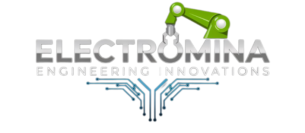Introduction
As artificial intelligence (AI) continues to transform industries and technologies, two fundamental processes lie at the heart of how AI systems function: AI training and AI inference. While these terms are often used interchangeably, they describe different stages of an AI model’s life cycle. Understanding the distinction between AI training and AI inference is crucial for leveraging AI effectively in any business or research environment.
In this article, we’ll break down what AI training and inference mean, how they work, and why it’s important to understand the differences between them for implementing AI technologies in the real world.
Section 1: What is AI Training?
Training is the foundational step in the development of an AI model. It is the process of feeding a large dataset into an algorithm and adjusting its parameters so the model can “learn” from the data. During training, the model is exposed to patterns, relationships, and information within the data that enable it to recognize those same patterns when it encounters similar data in the future.
Key aspects of AI training include:
- Dataset: High-quality and extensive data is required for accurate training.
- Algorithm: Machine learning algorithms like neural networks or decision trees form the basis of model creation.
- Training Phase: During this phase, the model constantly adjusts its internal parameters, optimizing its performance using techniques like gradient descent.
- Computation-Intensive: AI training typically requires significant computing power, often performed on specialized hardware like GPUs or TPUs due to its resource-heavy nature.
Training an AI model is analogous to teaching a human; the model learns from its mistakes and improves over time.
Section 2: What is AI Inference?
Once an AI model has been trained, it enters the inference phase. Inference is the process of using the trained AI model to make predictions or decisions on new, unseen data. Unlike training, where the model is constantly refining its understanding, inference is about applying what has already been learned.
Key aspects of AI inference include:
- Prediction Phase: The model applies its learned parameters to provide outputs or predictions for new data inputs.
- Real-Time Applications: AI inference is typically used in real-time applications such as voice recognition, image classification, or autonomous vehicles.
- Lower Computational Demand: Inference generally requires less computing power compared to training since the model’s parameters are already set. However, speed and efficiency are still important, especially for applications needing real-time results.
Think of AI inference like a student applying knowledge from their studies to solve problems in the real world.
Section 3: Key Differences Between AI Training and AI Inference
| Aspect | AI Training | AI Inference |
|---|---|---|
| Purpose | Learning from data, optimizing the model | Making predictions or decisions |
| Data | Requires a large, labeled dataset | Uses new, unseen data |
| Computation | Requires high computational resources | Less computation, can often run on edge devices |
| Duration | Time-consuming, may take hours to weeks | Quick responses, typically in real time |
| Hardware | Often uses specialized hardware (GPUs/TPUs) | Can run on CPUs, though some use GPUs for speed |
| Adaptability | Continuously updated based on data feedback | Fixed parameters, unless retrained |
The primary distinction is that AI training is about teaching the model, while AI inference is about applying what the model has learned to make decisions.
Section 4: Why Understanding Both is Important
For businesses and developers using AI, knowing the difference between training and inference is crucial for several reasons:
- Resource Allocation: Training requires significant hardware resources, whereas inference can be deployed on lighter systems.
- Cost Efficiency: Optimizing how often you train versus how efficiently your system performs inference can lead to significant cost savings.
- Scalability: Inference is where AI systems are used at scale. A well-trained model needs to perform inference quickly, which is critical for scaling applications such as customer service chatbots, automated content generation, or predictive analytics.
- Continuous Improvement: Training doesn’t stop at the initial phase. Models can be retrained periodically to adapt to new data trends, which ensures continued relevance and accuracy in inference.
Conclusion: Optimizing AI with the Right Balance of Training and Inference
Both AI training and inference are critical to the success of AI systems. Training equips the model with the ability to make intelligent decisions, while inference is how those decisions are put to practical use. Understanding their differences and implementing them strategically ensures AI models perform effectively in real-world applications, from automation to customer interaction to advanced data analytics.



